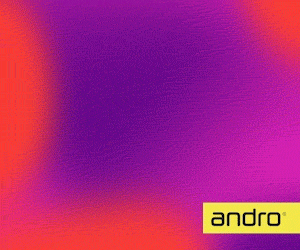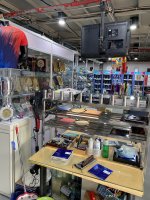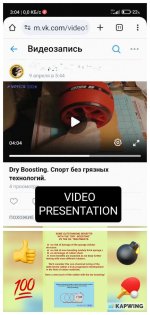This user has no status.
This user has no status.
Member
Hey Guys, this is my first post on this forum which I've been browsing for quite some time. First, I want to thank the TTD community because I've learned a lot from it.
Today, it's my turn to share my learnings with you!
I just got back from a week in Shanghai, where I spent time training and learning a lot from players, famous coaches, and shops about how they approach equipment, especially boosting, which is a hot topic on Western ping pong forums worldwide.
Here's the summary:
1) Key Learnings about Equipment:
2) Boosting Tutorial:
I encountered two main methods for boosting DHS H3 (with Kailin), though the techniques are quite similar.
I distinguish between two parts: how to boost a new rubber and how to reboost a used rubber.
According to them, a boost lasts between 6 and 8 weeks for a training frequency of 4 to 6 hours per week.
I want to emphasize that what I'm sharing in this post is not an absolute truth. There are different schools of thought, especially regarding booster brand preferences, across various Chinese provinces. This is purely based on my personal experience and what I was told in Shanghai.
I also highly recommend the Tongce store in Shanghai if you happen to be there and the ping pong club located just across from it. The staff is lovely, very knowledgeable, and makes a lot of effort to understand, discuss, and exchange ideas with you, even if your Chinese is as poor as mine!
3) My Observations and Feedback:
Today, it's my turn to share my learnings with you!
I just got back from a week in Shanghai, where I spent time training and learning a lot from players, famous coaches, and shops about how they approach equipment, especially boosting, which is a hot topic on Western ping pong forums worldwide.
Here's the summary:
- Key Learnings about Equipment: Directly translated from the Chinese players and coaches regarding H3, boosters, and equipment in general.
- Tutorial on how to boost your H3 as I learned in China, at the store, and at the club.
- My personal observations and feedback.
1) Key Learnings about Equipment:
- There is no equivalent to H3. When I asked about the Xuperman rubbers available at the club, the response was: "It's good, but nothing beats H3N + Kailin."
- An H3 must be boosted. While it's playable without boosting (as I have always done), you're missing out on 50% of the rubber's potential.
- Kailin is the most used booster, at least in the Shanghai province.
- The difference between OS (orange sponge) and BS (blue sponge): OS activates earlier and reaches its limit quicker, which is why BS is more popular for forehand use.
- The H3 Neo is not really "factory boosted"; it's rather a layer of glue added before packaging (also read this on Baidu).
- The "pro" versions of H3 (Ma Long, Fan Zhendong, Wang Chuqin, etc.) are a whole different world from the provincial versions, even the national ones. The hardness indices are apparently different, and the "pro" rubbers seem to be softer and grippier (translated from their words).
- Coming from a commercial H3 Neo 2.15 39, I was recommended to use the BS in 40 and 2.1 and then boost it with Kailin.
2) Boosting Tutorial:
I encountered two main methods for boosting DHS H3 (with Kailin), though the techniques are quite similar.
I distinguish between two parts: how to boost a new rubber and how to reboost a used rubber.
- What I learned during my visit at the store (Togce Sports Equipment):
- Leave the original glue layer of the H3 NEO.
- Apply a thin layer of Kailin.
- Rest for 8 hours on a flat surface in a well-ventilated area.
- Apply a second thin layer of Kailin.
- Rest for 8 hours on a flat surface in a well-ventilated area.
- Apply two layers of glue on the rubber (they used DHS 15).
- Apply one layer of glue on the blade.
- Remove the protective film on the rubber side at the end.
- Gently remove the old glue layer.
- Apply a new layer of glue.
- Apply a single very thin layer of Kailin.
- Wait 8 hours, placing it flat or on the booster bottle to regain the "dome" shape.
- Apply two layers of glue.
- Technique from a good club player (who also coaches) for a new H3N:
- Remove the protective films from both sides of the rubber.
- Apply a thin layer of Kailin and place it on the booster bottle to form a dome quickly.
- Wait 8 hours.
- Apply two layers of glue on the rubber.
According to them, a boost lasts between 6 and 8 weeks for a training frequency of 4 to 6 hours per week.
I want to emphasize that what I'm sharing in this post is not an absolute truth. There are different schools of thought, especially regarding booster brand preferences, across various Chinese provinces. This is purely based on my personal experience and what I was told in Shanghai.
I also highly recommend the Tongce store in Shanghai if you happen to be there and the ping pong club located just across from it. The staff is lovely, very knowledgeable, and makes a lot of effort to understand, discuss, and exchange ideas with you, even if your Chinese is as poor as mine!
3) My Observations and Feedback:
- The combo of Clipper CR (or other 7-ply blades), H3 on the forehand, and Desto F1 on the backhand is very popular in China.
- A boosted H3N is slightly faster but, more importantly, grips the ball better, provides much more feedback and sensation, and is very comfortable.
- The Chinese do not overthink their equipment at all.
- Keep it simple ! Chose a blade you like by the look and by the feel, not to fast, glue it an H3N and an ESN/BTY BH rubber and stick with it !
- Enjoy playing!
Attachments
Last edited:
















